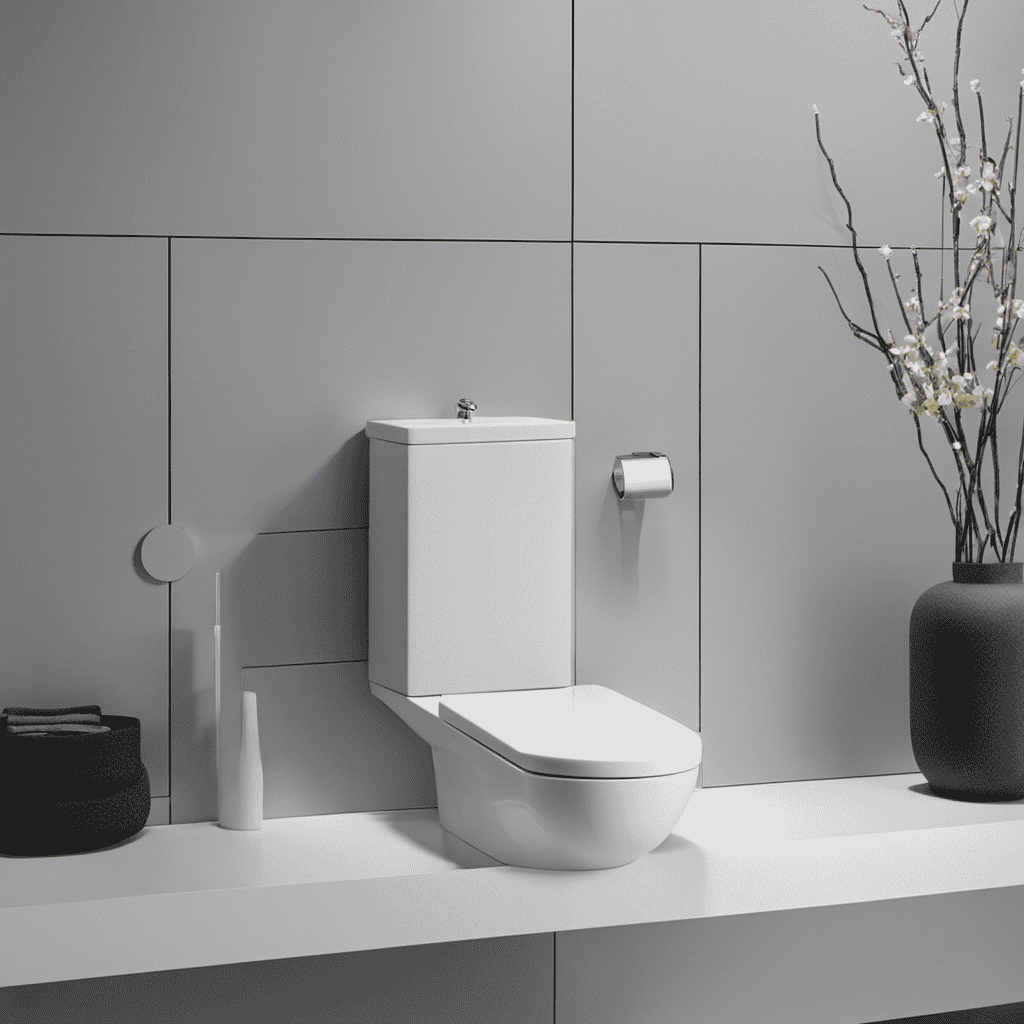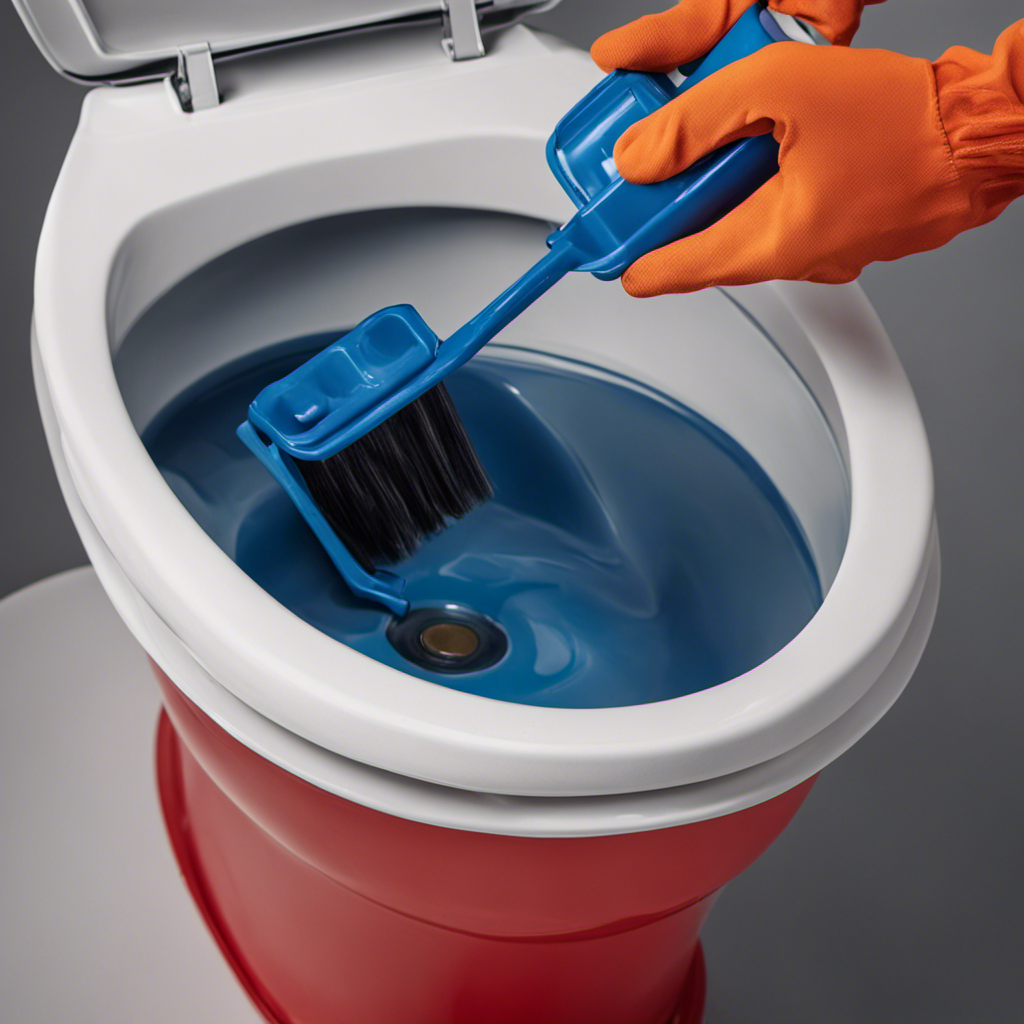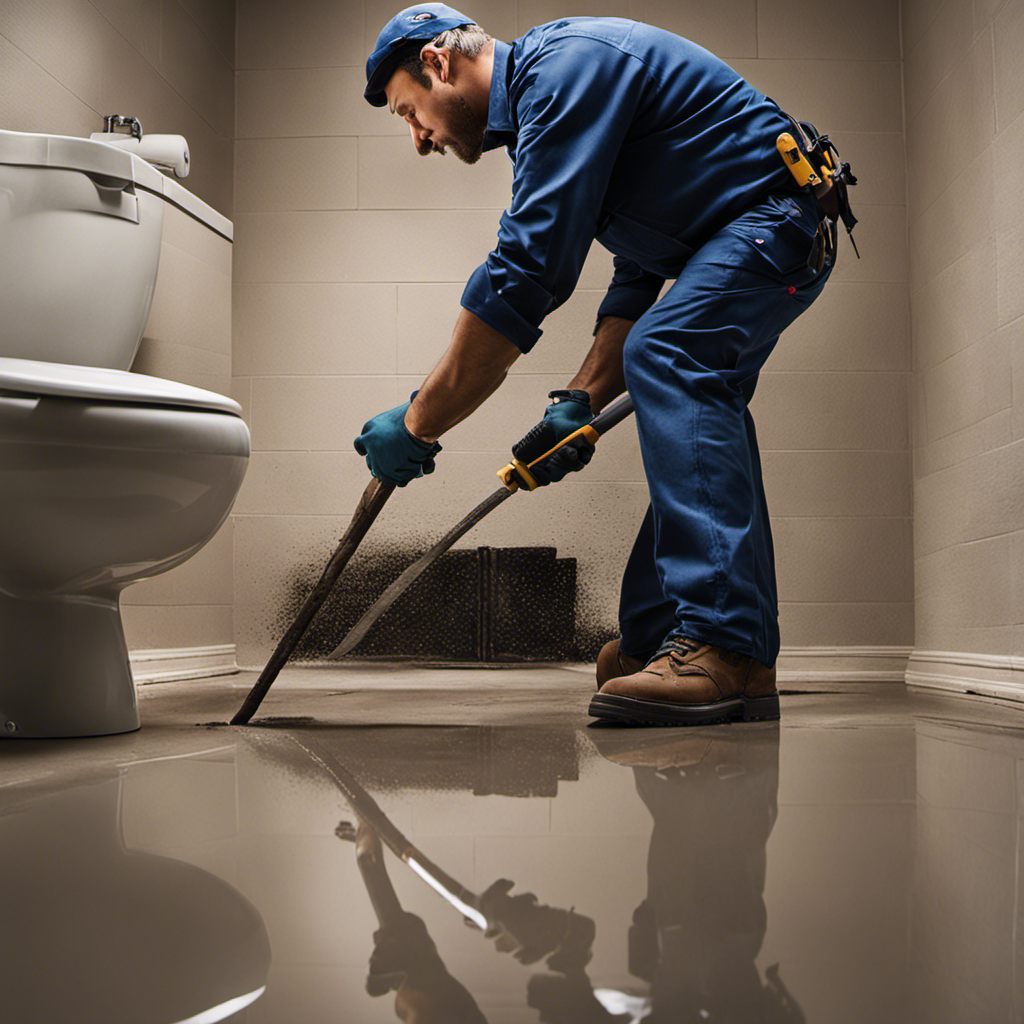As a homeowner, I’ve had my fair share of frustrating moments with a constantly flushing toilet. It’s like a never-ending cycle, draining both my patience and my wallet.
But fear not, because in this article, I’m going to share with you my knowledge and expertise on how to stop your toilet from flushing incessantly.
We’ll dive into the common causes, understand the flushing mechanism, and explore effective methods to fix this annoying issue.
So, let’s put an end to this symbol of perpetual flushing and regain control of our bathrooms.
Key Takeaways
- Faulty flapper valve or worn rubber seal can cause constant flushing.
- Adjust or replace the flapper to fix weak flush or constant running.
- Clean or replace the fill valve to solve slow refill issues.
- Regularly clean the inside of the tank to prevent future flushing problems.
The Common Causes of Constant Flushing
The most common cause of your toilet constantly flushing is a faulty flapper valve. The flapper valve is a rubber seal that sits at the bottom of the tank and controls the flow of water into the bowl. When it becomes worn or damaged, it can cause water to continuously leak into the bowl, leading to the constant flushing.
This can be accompanied by a loud toilet flushing noise, which can be quite annoying. To fix this issue, you will need to replace the flapper valve. This can be done by turning off the water supply to the toilet, removing the old flapper valve, and installing a new one.
Once this is done, the constant flushing should stop, and you can enjoy a quiet and properly functioning toilet. Understanding the toilet flushing mechanism will further help you in troubleshooting and resolving any future issues.
Understanding the Toilet Flushing Mechanism
To understand how it works, you should take a closer look at the toilet flushing mechanism. It is essential to maintain your toilet flushing system to prevent any issues and ensure its smooth operation.
There are different types of toilet flushing mechanisms available, each with its own unique features. Here are a few key points to help you understand and maintain your toilet flushing mechanism:
-
Flapper Valve Mechanism:
-
The flapper valve mechanism is the most common type of toilet flushing system.
-
It consists of a rubber flapper that covers the flush valve opening and a chain connected to the flush lever.
-
Pressure-Assisted Mechanism:
-
Pressure-assisted flushing mechanisms use compressed air to create a powerful flush.
-
These mechanisms are commonly found in commercial buildings and high-efficiency toilets.
Effective Methods to Fix a Flushing Toilet
First, check if the water supply valve is fully open before attempting to fix your flushing toilet. When it comes to quick fixes for a flushing toilet, there are several DIY solutions you can try before calling a plumber. Here are some effective methods to fix common toilet flushing problems:
| Problem | Possible Cause | Solution |
|---|---|---|
| Weak Flush | Partially closed flapper | Adjust or replace the flapper |
| Slow Refill | Faulty fill valve | Clean or replace the fill valve |
| Constant Running | Damaged flapper | Replace the flapper or adjust the chain |
| Double Flushing | Loose or worn flush handle | Tighten or replace the flush handle |
Troubleshooting Toilet Flushing Problems
Before attempting any fixes, make sure to check if the water supply valve is fully open. This is a common issue that can prevent a toilet from flushing properly. If the water supply valve is open and the toilet still won’t flush, there may be other underlying problems.
Here are some troubleshooting steps to help you identify and fix the issue:
-
Check the toilet flush handle:
-
Ensure the handle is properly connected to the flushing mechanism.
-
If the handle is loose or broken, replace it with a new one.
-
Check the toilet bowl water level:
-
If the water level is too low, adjust the float valve to increase it.
-
If the water level is too high, adjust the float valve to decrease it.
Preventing Toilet Flushing Issues in the Future
If you want to prevent future issues with your toilet’s flushing, make sure to regularly clean the inside of the tank.
Toilet maintenance tips are crucial for ensuring the proper functioning of your toilet.
One important tip is to clean the tank at least once every few months.
Start by turning off the water supply to the toilet and flushing it to empty the tank.
Then, use a mixture of vinegar and water to scrub away any mineral deposits or grime that may have built up inside.
Another important aspect of toilet maintenance is considering water saving toilet options.
These toilets are designed to use less water per flush, helping you save water and reduce your water bill.
Upgrading to a water-saving toilet can be a smart investment in the long run, both for the environment and your wallet.
Remember to keep these toilet maintenance tips in mind to prevent future flushing issues and ensure the longevity of your toilet.
Frequently Asked Questions
How Do I Stop My Toilet From Flushing Continuously After I’ve Already Fixed the Common Causes?
After fixing common causes of toilet flushing, if it still continues, there might be a more complex issue. Troubleshooting the toilet’s internal components, such as the flapper or fill valve, can help pinpoint the problem and stop the continuous flushing.
Is There a Way to Adjust the Water Level in the Toilet Tank to Prevent Constant Flushing?
To adjust the water level in the toilet tank and prevent constant flushing, the fill valve can be adjusted. By turning the adjustment screw or knob on the fill valve, you can control the water level in the tank.
Can Using Certain Cleaning Products Affect the Toilet Flushing Mechanism?
Using certain cleaning products can negatively affect the toilet flushing mechanism. Harsh chemicals can corrode the parts, leading to leaks or constant flushing. It’s important to choose gentle, non-abrasive cleaners to maintain optimal toilet performance.
Are There Any Quick Fixes to Temporarily Stop a Toilet From Flushing Until I Can Fully Repair It?
In an emergency toilet repair situation, there are a few temporary solutions to stop a toilet from flushing until it can be fully repaired. These quick fixes can help prevent any further damage or inconvenience.
What Should I Do if None of the Troubleshooting Methods Mentioned in the Article Work to Fix My Toilet’s Flushing Problem?
What if none of the troubleshooting methods mentioned in the article work to fix my toilet’s flushing problem? Are there alternative methods I can try? Let’s explore some common mistakes to avoid.
Conclusion
In conclusion, fixing a constantly flushing toilet may seem daunting, but it can be easily resolved with the right knowledge and tools.
By understanding the flushing mechanism and troubleshooting common issues, you can prevent future problems.
Remember, a steady hand and a little patience go a long way in maintaining a functioning toilet.
So next time you hear that relentless flush, don’t fret, just follow these steps and bring peace to your bathroom sanctuary.










